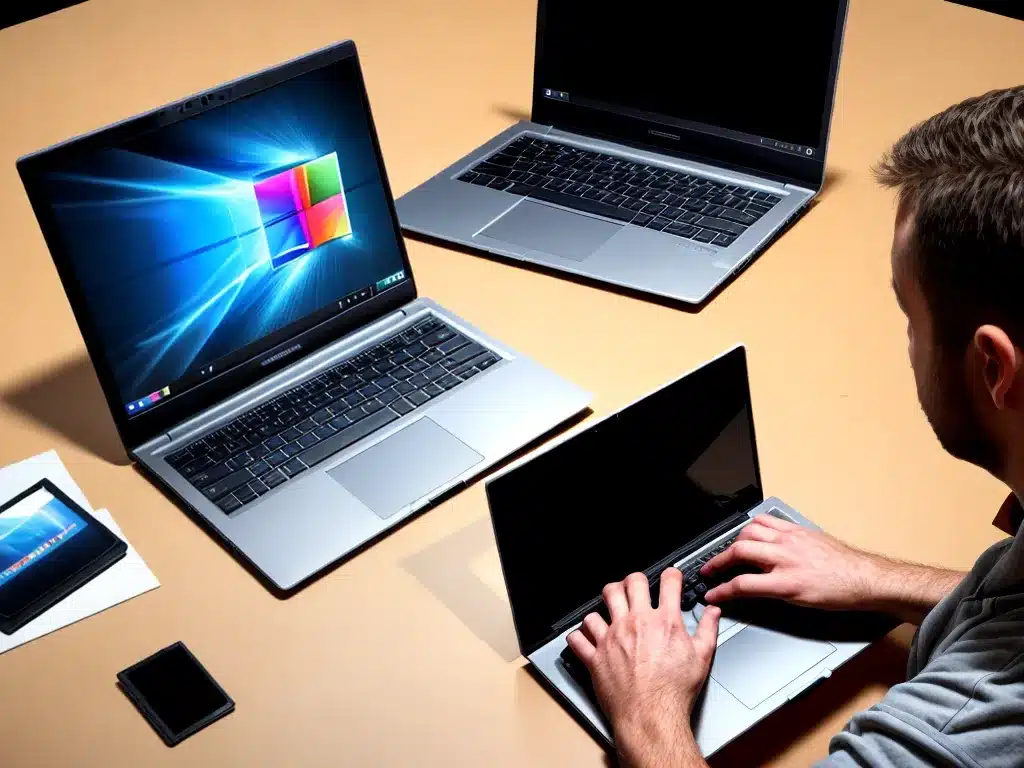
Having issues with your laptop’s touchpad can be extremely frustrating. As our main means of interfacing with laptops, a faulty touchpad can significantly reduce productivity. Fortunately, there are some troubleshooting steps you can try to get your touchpad working properly again.
Diagnose the Issue
The first step is to clearly identify the nature of the touchpad issue:
Determine If It’s a Hardware or Software Problem
-
Hardware issues – These are problems with the actual touchpad hardware. Symptoms include the touchpad not responding at all, clicking not registering, cursor jumping around the screen, etc. Hardware issues typically require repair or replacement.
-
Software issues – These occur when the touchpad drivers or settings get corrupted. Symptoms include touchpad delay, unintended gestures, pointer speed problems, etc. Software issues can often be fixed with driver updates or adjusting settings.
Note Any Specific Symptoms
- Does the problem occur intermittently or consistently?
- Are there any patterns, such as the issue occurring more after waking from sleep?
- Does the whole touchpad malfunction or just clicking/scrolling?
Consider What Changes Preceded the Issue
- Did the issue start after a Windows update or driver update?
- Has the laptop recently been dropped or damaged? This can indicate a hardware problem.
- Did you recently install new software that could be interfering?
Thoroughly diagnosing the specifics of the problem will give you a good starting point for troubleshooting.
Try Universal Touchpad Fixes
If you’re not sure of the cause, try these universal fixes that address common touchpad issues:
Update or Reinstall Drivers
Outdated, buggy drivers are a common source of touchpad woes. Updating to the latest drivers from your laptop manufacturer’s website may fix interface issues. Alternatively, you can try uninstalling the drivers entirely and reinstalling for a clean slate.
Adjust Touchpad Settings
Windows 10 has settings to tweak touchpad behavior including sensitivity, scrolling, gestures, etc. Playing with these settings can potentially resolve anomalous touchpad behavior.
Perform System Restore
Doing a system restore to an earlier restore point before the issues started can roll back problematic driver or Windows updates that may be causing trouble.
Try an External Mouse
Test with an external USB or wireless mouse. If the mouse works flawlessly, it points to an issue with the built-in touchpad hardware rather than a deeper system-wide problem.
Take Steps for Hardware vs. Software Issues
If the universal fixes don’t resolve the issue, take steps based on whether you diagnosed the problem as hardware or software-related:
For Hardware Issues
-
Check connections – Open the laptop case and ensure the touchpad connector cable is securely attached to the motherboard. Re-seating the connection can fix issues.
-
Clean touchpad – Use compressed air to clean around and under the touchpad button. Built up dust can interfere with proper functioning.
-
Replace touchpad – If all else fails, the touchpad hardware itself likely needs to be replaced. This requires opening up the laptop and swapping in a new touchpad module.
For Software Issues
-
Boot into Safe Mode – If the touchpad works properly in Safe Mode, it indicates a software/driver problem, not hardware.
-
Clean install/rollback device drivers – Uninstalling all touchpad drivers and doing a fresh install of the latest drivers can clear up conflicts.
-
Scan for malware – Malware infections can sometimes cause touchpad issues. Run a scan with your antivirus software.
-
Perform system file check – Run SFC and DISM tools to scan Windows system files and repair corrupt files that could be causing problems.
When to Take It to a Repair Shop
If you’ve tried all applicable troubleshooting steps and the laptop touchpad still doesn’t work properly, it’s time to take it in for professional repair. A computer technician can diagnose the specific failed component and perform repairs like replacing the touchpad. In some cases, if the laptop is under warranty, touchpad issues may be covered by the manufacturer.
With the right troubleshooting approach and steps, many common touchpad frustrations can be resolved and your laptop interaction experience improved. But if problems persist, don’t hesitate to seek professional assistance.












